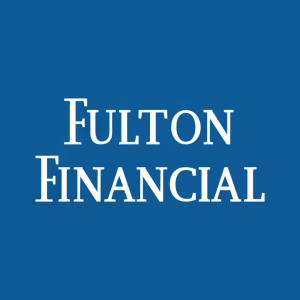Fulton Financial Announces Fourth Quarter and 2020 Results
Fulton Financial Corporation (NASDAQ:FULT) (“Fulton” or the “Corporation”) reported net income available to common shareholders of
“We were pleased with our company’s achievements for the 4th quarter and for the year as a whole, given the challenges presented by the lingering presence of COVID-19,” said E. Philip Wenger, Chairman and CEO of Fulton Financial Corporation. “The low interest rate environment continued to put pressure on our margin, but even in this challenging environment, we had stable asset quality, were able to provide Paycheck Protection Program and Main Street loans to our customers, helped our mortgage business grow to historic highs, and saw wealth management business performance that was beyond our expectations.”
Net Interest Income and Balance Sheet
Net interest income for the fourth quarter of 2020 was
Total average assets for the fourth quarter of 2020 were
Average loans and yields, by type, for the fourth quarter of 2020 in comparison to the third quarter of 2020 are summarized in the following table:
|
Three months ended |
|
|
||||||||||||||||||
|
December 31, 2020 |
|
September 30, 2020 |
|
Growth |
||||||||||||||||
|
Balance |
|
Yield (1) |
|
Balance |
|
Yield (1) |
|
$ |
|
% |
||||||||||
|
(dollars in thousands) |
||||||||||||||||||||
Average Loans, net of unearned income, by type: |
|
|
|
|
|
|
|
|
|
|
|
||||||||||
Real estate - commercial mortgage |
$ |
7,101,363 |
|
|
3.21 |
% |
|
$ |
6,986,528 |
|
|
3.27 |
% |
|
$ |
114,835 |
|
|
1.6 |
% |
|
Commercial and industrial(2) |
5,855,305 |
|
|
2.57 |
% |
|
5,983,872 |
|
|
2.53 |
% |
|
(128,567) |
|
|
(2.1) |
% |
||||
Real estate - residential mortgage |
3,087,529 |
|
|
3.65 |
% |
|
2,975,516 |
|
|
3.73 |
% |
|
112,013 |
|
|
3.8 |
% |
||||
Real estate - home equity |
1,212,113 |
|
|
3.91 |
% |
|
1,237,602 |
|
|
3.87 |
% |
|
(25,489) |
|
|
(2.1) |
% |
||||
Real estate - construction |
1,009,284 |
|
|
3.11 |
% |
|
981,589 |
|
|
3.84 |
% |
|
27,695 |
|
|
2.8 |
% |
||||
Consumer |
468,678 |
|
|
4.07 |
% |
|
464,851 |
|
|
4.07 |
% |
|
3,827 |
|
|
0.8 |
% |
||||
Equipment lease financing |
279,059 |
|
|
3.98 |
% |
|
279,217 |
|
|
3.96 |
% |
|
(158) |
|
|
(0.1) |
% |
||||
Other(3) |
(18,817) |
|
|
N/A |
|
(28,656) |
|
|
N/A |
|
9,839 |
|
|
(34.3) |
% |
||||||
Total Average Loans, net of unearned income |
$ |
18,994,514 |
|
|
3.45 |
% |
|
$ |
18,880,519 |
|
|
3.38 |
% |
|
$ |
113,995 |
|
|
0.6 |
% |
|
|
|
|
|
|
|
|
|
|
|
|
|
||||||||||
(1) Presented on a fully-taxable equivalent basis using a |
|||||||||||||||||||||
(2) Includes average PPP loans of |
|||||||||||||||||||||
(3) Consists of overdrafts and net origination fees and costs. |
|||||||||||||||||||||
|
|||||||||||||||||||||
Total average assets for the year ended December 31, 2020 were
Total average liabilities increased
|
Three months ended |
|
|
||||||||||||||||||
|
December 31, 2020 |
|
September 30, 2020 |
|
Growth |
||||||||||||||||
|
Balance |
|
Rate |
|
Fulton Financial
NASDAQ:FULTFULT RankingsFULT Latest NewsFULT Latest SEC FilingsOct 21, 2025
[8-K] FULTON FINANCIAL CORP Reports Material Event
Sep 16, 2025
[144/A] FULTON FINANCIAL CORP SEC Filing
FULT Stock Data
3.14B
178.66M
1.09%
77.94%
2.16%
Banks - Regional
National Commercial Banks
United States
LANCASTER
| ||||||||||||||||








